Results 4,451 to 4,460 of 12096
Thread: Anandtech News
-
11-04-14, 01:46 AM #4451
Anandtech: Synology Launches 8-bay Rangeley-based DS1815+
In the last week of September, Synology launched their Intel Rangeley-based DS415+. In our review, we found it resolved most of the issues encountered in the previous Atom-based SMB NAS units (such as performance with encryption enabled and latencies when subject to multi-client access). While 4-bay units tend to cover the needs of the lower end of the SMB spectrum, higher bay counts are necessary for the other segments. Towards this, Synology is launching the 8-bay DS1815+ today.
The main SoC in the unit is still the Intel Atom C2538 (same as the DS415+). The differences between the DS415+ and the DS1815+ (in addition to the obvious difference in the number of bays) include expandable memory (one free slot), two extra GbE ports, and support for an additional DX513 expansion chassis (total of two, compared to one in the DS415+). Unlike the 100W external adapter in the DS415+, we have an internal 250W PSU in the DS1815+.
Gallery: Synology DS1815+ - Chassis Design & I/O





The specifications of the DS1815+ are summarized in the table below.
Going by the models in the 13+ series, a 5-bay version to complement the 415+ and 1815+ should also be coming soon.Synology DS1815+ Specifications Processor Intel Atom C2538 (4C/4T Silvermont x86 Cores @ 2.40 GHz) RAM 2 GB DDR3 RAM (+ 4GB max. in 2nd slot) Drive Bays 8x 3.5"/2.5" SATA II / III HDD / SSD (Hot-Swappable) Network Links 4x 1 GbE External I/O Peripherals 4x USB 3.0, 2x eSATA Expansion Slots None VGA / Display Out None Full Specifications Link Synology DS1815+ Specifications Price £790.80 (Span UK)
More...
-
11-04-14, 09:00 AM #4452
Anandtech: 802.11ac with Killer: MSI’s Teaming Technique coming to ACK Branded Mother
One of the many interesting ways in which motherboard companies diversify their product ranges is with networking opportunities. In most product stacks, manufacturers use Realtek and Intel network ports with reckless abandon, while a few also use wireless connectivity or Killer network solutions to add value to their product. MSI has now added another potential into their mix with their ‘ACK’ branding. The acronym can be described as 802.11ac + Killer, with both solutions coming from Qualcomm Atheros’ networking solutions. What makes this combination new, aside from using an Atheros WiFi solution, is that MSI is allowing ‘Killer Smart Teaming’ which allows the wired and wireless network to act together, offering a 1.867 Gbps maximum network throughput.
The ACK feature will come to their highest end motherboards first – the Z97 Gaming 9 ACK and the X99S Gaming 9 ACK should be available in the market shortly with the WiFi/software updates. Both of these boards also feature a stylistic upgrade on their rear IO panels, as shown above. Aside from this, both motherboards are the same as their non-ACK counterparts.
Unfortunately, MSI’s marketing is a little misleading. In order to take advantage of the teaming effort as proposed, with the wireless data taking video streaming and the wired taking the gaming, there is no thought made to the data actually travelling out of the home and down the cables. For example, my 16 Mbps connection will still only run at 16 Mbps outside of my home, even if I connect the machine with both wired and wireless to my router. It also relies on the router also prioritizing this data over other machines on the network, or being able to handle the data in an appropriate fashion.
One of the reasons I personally like the myriad of networking options on motherboards today is because it becomes more important for home networking, allowing greater speeds and greater ranges wherever the system is placed. This is especially important when a user (or multiple users) are streaming from a home NAS. Trying to use a form of hybrid teaming to deal with data travelling outside the home for gaming purposes might be a misplaced venture. While it means that data is separated and we’re not dealing with the windows stack/software to prioritize the data through one network connection, it is still limited by the router's prioritization protocols and external data rate. The best use case for this might be someone with Google Fiber, although one network connection should still be able to deal with streaming and gaming at the same time.
More...
-
11-04-14, 09:37 AM #4453
Anandtech: Lenovo ThinkStation P300 Workstation Review: Haswell plus Quadro
Individual under-the-desk workstations are an integral part of modern society. Normally a work PC is either thought-limited or throughput-limited, but depending on the type of business and financials of that business, something in the middle might be required. Lenovo’s ThinkStation P300 is set up for that intersection, featuring a quad core Haswell Xeon, ECC memory and a Quadro K4000 under the hood. Our sample came with a downgrade to Windows 7, 8GB of DRAM and a 1TB 7200RPM SSHD drive for just over $2100.
More...
-
11-04-14, 02:00 PM #4454
Anandtech: Tegile Launches T3600 & T3700 All-Flash Arrays
Last week we expanded our enterprise storage coverage with flash arrays and today the coverage continues with Tegile's announcement of the T3600 and T3700. To bring everyone up to the speed, let's start with a brief introduction of the company. Tegile was founded in 2009 by Rohit Kshetrapal, Rajesh Nair, Justin Cheen and Alok Agrawal and operated in stealth mode until 2012. The founders share a history at Perfigo, which was a developer of packaged network access control solutions that was acquired by Cisco in 2004. As a result Tegile's expertise lies in the networking and connectivity aspect of the array, and hence Tegile provides both hybrid and all-flash arrays.
SanDisk and Western Digital (i.e. HGST) are strategic investors in the company, which guarantees Tegile access to the latest SSDs at competitive prices. Currently all Tegile's arrays use SAS SSDs, for which SanDisk and HGST both have extensive lineups, but as the industry moves towards PCIe Tegile will be making the transition as well. Tegile is already evaluating some of Fusion-io's PCIe SSDs now that the company is under SanDisk, but there are no finalized plans for a product yet.

The T3600 and T3700 are additions to Tegile's all-flash arrays and bring smaller capacity points to the lineup. The existing T3800 started at 48TB raw, but Tegile told me that many customers were looking for something around 10-20TB in capacity and the T3800 was too beefy (read: expensive) for that. The T3600 and T3700 have 9.6TB and 24TB of raw flash respectively, which can be extended by using expansion shelves.
The expansion shelves are basically just a bunch of drives that connect to the array and use its logic, but it should be kept in mind that the shelves are their own units and thus eat up rack space. 2U and 4U expansions are available with the T3600 and T3700 having support for either four 2U (ESF-10/25/50) or two 4U (ESF-145) expansions. The maximum effective capacity is achieved with two ESF-145 expansions that are 144TB each and a 5x multiplier from compression and de-duplication, which Tegile claims is the typical increase in usable capacity. Obviously, the actual multiplier depends on the stored data and some workloads are inherently more compressible than others, so the 5x multiplier is merely an ideal guideline.
The T3400 is different from the rest in the sense that it supports the HDD-based 72TB ES4000 expansion shelf, whereas the other T3000 series models don't. The reason lies in the architecture as the T3400 utilizes a pool of very low latency SSDs (likely SLC-based) that are used for metadata handling. The way Tegile handles metadata is actually one of its core advantages because Tegile stores the host and meta data separately, which is essential for efficient data de-duplication and also prevents the metadata from fragmenting. The usage of lower latency SSDs in the T3400 makes sense because all the meta data IOs need to be offloaded from the HDDs, but since that is not a problem with the rest of the T3000 lineup, high density eMLC SSDs are used in other models. All drives in the array are Self Encrypting Drives (SEDs) with AES-256 support.
On the connectivity side, all T3000 series models have 14 1Gbps Ethernet ports with two of them dedicated to management. Additional connectivity options include dual-port 4/8 Fibre-Channel, 10Gbps Ethernet and quad-port 1Gbps Ethernet. Protocol support includes iSCSI, FC, NFS, CIFS and SMB protocols.

Along with the T3600 and T3700 releases, Tegile has updated its IntelliFlash OS to 3.0. The provisioning process has been streamlined and the provisioning profiles have been enhanced. The idea behind the provisioning profiles is to give IT administrators an easy way to set up provisioning based on the workload because not all IT administrators necessarily understand the complex storage architectures and what is the optimal provisioning for their workload.
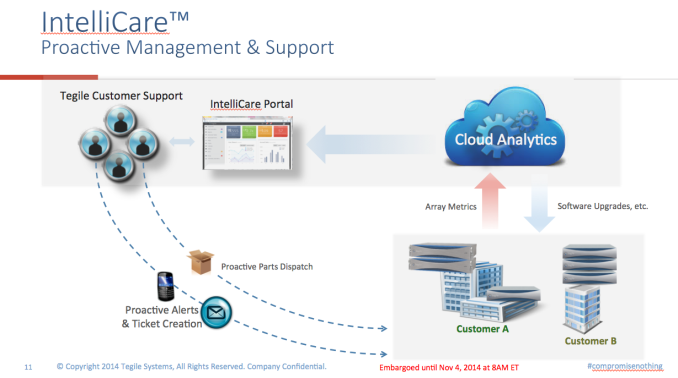
Tegile is also releasing cloud-based IntelliCare customer support, which automatically collects various data points from the array and sends them to Tegile's servers for analysis. The analysis allows Tegile to inform the customer about any potential component failures or other issues, and what's interesting is that Tegile customers can view metrics of another customer's Tegile array. Hence IT administrators can compare their array against other Tegile arrays in the wild and can see if there are any settings that could be toggled for more optimized performance.
The T3600 and T3700 are both available now and start at $220,000 (~$23/GB) and $300,000 ($12.50/GB) respectively.
More...
-
11-04-14, 02:31 PM #4455
Anandtech: NVIDIA and Ubisoft Team Up for Pick Your Path Gaming Promotion
This morning NVIDIA announced a new gaming bundle for their top GPUS. New buyers of GTX 980, 970, 780 Ti, or 780 desktop GPUs qualify for the offer, along with any purchases of notebooks with GTX 980M or 970M GPUs. The bundle features three games from Ubisoft, all of which make use of one or more of NVIDIA's GameWorks libraries and which are part of NVIDIA's The Way It's Meant To Be Played program.
The games in question are Assassin's Creed Unity, Far Cry 4, and The Crew, and since none of the games have shipped yet this presents a nice opportunity to grab some new hardware to power a brand new game for the holidays. What better way to get into the spirit of giving than to buy yourself a new GPU, right? Or I suppose you could give the game and/or GPU to someone else if you're feeling nice. :-)
To quickly run through the games and technologies, Assassin's Creed Unity features support for HBAO+, TXAA, and PCSS. One interesting note regarding Assassin's Creed Unity is that we've heard it will have a frame rate cap of 60FPS, which is unfortunately becoming more and more common on multi-platform releases. Next up, Far Cry 4 also features support for HBAO+, TXAA, and PCSS; it adds NVIDIA's updated Godrays technology along with HairWorks. The Crew is the third option, a racing game that makes use of HBAO+ and TXAA technologies. All of the games also feature "enhanced 4K support", which basically means 4K rendering has been tested and performance optimizations are in place to make it more usable.
For those of you that don't keep up with acronyms, HBAO+ (Horizon Based Ambient Occlusion) is an alternative to SSAO (Screen Space Ambient Occlusion) that helps with rendering more realistic shadows. TXAA (Temporal Anti-Aliasing) is an alternative to MSAA (Multi-Sample Anti-Aliasing) or SSAA (Super-Sample Anti-Aliasing) that combines MSAA techniques with custom filters to reduce the appearance of jaggies; in particular it can help with jaggies that aren't on the edges of a polygon. PCSS (Percentage Closer Soft Shadows – PDF link) is a way to improve the look of shadow maps by softening the shadows based on how far an object is from a surface.
Next, we've seen Godrays in various forms for a while, and the latest iteration apparently uses tessellation to project transparent polygons (from the shadow maps) that can then be lit up to provide more realistic looking rays of light. Finally, HairWorks uses tessellation to dynamically render potentially hundreds of thousands of strands of hair in place of detail textures. Also worth note is that while TXAA and HBAO+ are restricted to NVIDIA GPUs, the Godrays, HairWorks, and PCSS libraries are (I believe) GPU platform agnostic.
You can get more information on the Pick Your Path promotion on NVIDIA's site. As for the games, Assassin's Creed Unity is slated for launch on November 11, Far Cry 4 follows a week later on November 18, and The Crew has a release date of December 2 (according to Steam). All three games have a current MSRP of $59.99, so if you're already looking at a GTX 970 and one of these titles that's a nice discount. There's no indication how long the promotion will run, but it's likely a case of "until we run out of codes" and most likely at least through the end of 2014.
Gallery: NVIDIA and Ubisoft Team Up for Pick Your Path Gaming Promotion


More...
-
11-04-14, 03:31 PM #4456
Anandtech: NVIDIA Free To Play 2014 Fall Bundle
Going along with their Ubisoft Bundle for high-end GPUs, NVIDIA also announced an updated Fall 2014 Free To Play gaming bundle that applies to their "mainstream" GPUs. As with previous Free To Play bundles, you get $150 worth of in-game currency for use in three recent F2P games ($50 per game). The F2P bundle is for new buyers of GTX 750 Ti and GTX 750 desktop GPUs, and it is also available for purchases of notebooks with GTX 880M, 870M, 860M, and 850M GPUs.
The three games are War Thunder, Strife, and Infinite Crisis, and at least two of the games make use of one or more of NVIDIA's GameWorks libraries – to be specific, War Thunder includes support for WaveWorks and Destruction, and Strife uses PhysX, Particles, and HairWorks. (There's no mention of any NVIDIA technologies for Infinite Crisis.)
Of course Free To Play game currency as part of a bundle is often viewed as less desirable than a full game – the business idea with F2P is to basically get you hooked so you end up spending money. Still, for those that are interested in any/all of the above titles, the in-game credits can prove useful. The bundle gives you 1000 Strife "Gems", 10000 War Thunder "Golden Eagles", and 5000 Infinite Crisis "Crisis Coins" to get you started.
All three games are already available in various forms. Strife is in open beta and targets the popular MOBA segment. Along with the usual MOBA aspects, Strife heroes also have access to pets that accompany you and level along with your hero. Infinite Crisis is another MOBA, with characters from the DC Legends universe (e.g. Batman, Joker, Green Lantern, Superman, etc.) War Thunder goes a different route and is a WWII combat simulation focusing on aerial, vehicular, and fleet battles.
Gallery: NVIDIA Free To Play 2014 Fall Bundle


More...
-
11-04-14, 04:01 PM #4457
Anandtech: NVIDIA 344.60 Game Ready Drivers Available
Sorry for the spate of NVIDIA posts, but this is the last one for now. Today, NVIDIA also released their 344.60 Game Ready driver for Call of Duty: Advanced Warfare. As usual, these drivers include all of the previous optimizations from the 344 series, building off of the previous 344.48 driver released just two weeks back (which included DSR support for Fermi and Kepler GPUs). Unlike the last release, the only noteworthy change mentioned in the release notes (PDF) this time appears to be Call of Duty support/optimizations (including an SLI profile), though with a 57 page document I may have missed something.
You can grab the drivers at the usual place, or if you're running GeForce Experience that will allow you to update directly. Note also that searching for Windows 64-bit desktop drivers for GTX 980 (and perhaps other GPUs) is currently coming up with 344.48 as the latest release, so here's a direct link to the Windows 7/8/8.1 64-bit drivers. Notebook drivers are also available for all recent notebooks (GeForce 400M and later), if you need them.
More...
-
11-04-14, 05:00 PM #4458
Anandtech: PlayStation Plus November 2014 Free Games Preview
A couple of days after the Xbox games were announced, Sony has now revealed the free game lineup for PlayStation Plus members. One note about last month’s games though – DriveClub PlayStation Plus Edition has still not shipped, so if you are waiting for that unfortunately you will have to wait a bit longer. As I mentioned in the Xbox article, Microsoft needs to ramp up the Games with Gold program because once again, Sony has six games available across the three platforms, and three of them are day one releases. Let’s check out what is in store for November.
PlayStation 4
The Binding of Isaac: Rebirth
The first game on tap for the PlayStation 4 is also the first day one release for this list. The Binding of Isaac: Rebirth is from developer Nicalis, and is a remake of The Binding of Isaac which originally came out in 2011 and was built on Flash. The game is a top down RPG similar in style to the original The Legend of Zelda, at least as far as the dungeon crawling goes. Players start the game as Isaac, who tries to escape from his mother and runs away into their monster filled basement. The levels are randomly generated. The original PC version scored a very high 84 Metascore, and 8.3 user score on Metacritic. The Binding of Isaac: Rebirth will also be made available on the PS Vita.
“The Binding of Isaac is a randomly generated action RPG shooter with heavy Rogue-like elements. Following Isaac on his journey, players will find bizarre treasures that change Isaac’s form giving him superhuman abilities and enabling him to fight off droves of mysterious creatures, discover secrets and fight his way to safety. The Binding of Isaac: Rebirth is the ultimate of remakes with an all-new highly efficient game engine, all-new hand-drawn pixel style artwork, highly polished visual effects, all-new soundtrack and audio by Ridiculon, and hundreds upon hundreds of designs, redesigns and re-tuned enhancements by series creator, Edmund McMillen.”
SteamWorld Dig
The second PS4 game for November is SteamWorld Dig, from developer Image & Form. This game was originally released in August 2013 on the Nintendo 3DS, and ported to the PS4 in March of this year. In this 2D Platformer, you control Rusty, who is a steamboat miner. Collecting ore and gems is your goal. SteamWorld Dig scored an 82 Metascore and 7.4 User score on metacritc. It normally sells for $9.99, and it will also be available for the PS Vita.
“SteamWorld Dig is a platform mining adventure with strong Metroidvanian influences. Take the role of Rusty, a lone mining steambot, as he arrives at an old mining town in great need. Dig your way through the old earth, gaining riches while uncovering the ancient threat that lurks below…”
PlayStation 3
Frozen Synapse Prime
The first game available on the PS3 is also a day one release for this platform. Frozen Synapse Prime is an asynchronous turn-based strategy game from developer Double Eleven. Players can take on several multiplayer matches simultaneously, or play the single player campaign, which is set in a dystopian future where an evil corporation is attempting to take over the city. The Vita version was released in September, and scored an 84 Metascore and 7.3 User Score on metacritic.
“Take on the role of Tactics, leading a small rebel faction to overthrow a powerful corporation controlling the city of Markov Geist. Control an elite strike team of futuristic soldiers from shotgunners and snipers, to grenadiers and machine-gunners in the ultimate turn-based strategy game. Plot paths and issue orders to your units, test your plans and predict your opponent in each turn. Combat plays out on procedural, 3D, destructible and customizable battlefields.”
LUFTRAUSERS
The second game for the PS3 this month is LUFTRAUSERS from developer Vlambeer. This single-player game is an airplane-based shoot’em up, which originally launched in March 2014. Players control an airplane and are given a full 360° of motion for the plane. As you progress through the game, you can customize your plane to increase your potential. LUFTRAUSERS scored an 80 Metascore and 7.5 User Score on Metacritic, and normally retails for $9.99. The PS Vita version will also be available.
“The skies will be set aflame and the seas will overflow with wreckage in Vlambeer’s stylish arcade shooter LUFTRAUSERS! Select from over 125 combinations of weapons, bodies, and propulsion systems and take to the skies to battle enemy fighter planes, battleships, submarines, and rival aces for glory, honor, and high scores. Bravely volunteer for one of over 100 daring missions and become the most legendary Rauser pilot of all time!”
PlayStation Vita
Escape Plan
The first PS Vita game is Escape Plan from developer Fun Bits Interative. This puzzle game was first released as a launch title for the Vita in February 2012. The goal of the game is to control Lil and Laarg through a series of booby-trapped rooms. The artistic style of the game certainly makes for a great looking game. Escape Plan scored a 71 Metascore and 7.5 User Score on metacritic, and normally retails for $14.99. The PS4 version will also be available.
“Escape Plan takes advantage of the PlayStation®Vita system’s multi-touch display, rear touch panel, swipe interfaces and motion sensor, putting the fate of Lil & Laarg in the palm of your hand. Players can swipe, tap, poke, squeeze and slap our hapless heroes and interact with the unique and twisted puzzles of each room. Only you can help them survive before their captor and nemesis, Bakuki, recycles them and turns them into his minions. Swipe as if your life depended on it in this exclusive survival-humor game for the PS Vita system.”
The Hungry Horde
The final game for the month is also a new one to the Vita store. The Hungry Horde, from developer Nosebleed Interactive, has the player leading a horde of zombies on a quest to destroy humanity. What else can be said about zombie rampage games? The Hungry Horde normally retails for $9.99
“Lead a horde of zombies on a manic mission to expand the ranks of the undead and destroy humanity. Battle the clock and attempt to trash the planet in this highly addictive, run-till-you-die zombie rampage – one game and you’ll be “turned”!”
November brings six more games, and three new games to their respective platform. While none of November’s titles would be considered AAA games, there is a good selection again for all platforms. Sony also does a great job of promoting their cross-platform ecosystem with these bundles, and most of the time when a game is available on more than one Sony platform, the PlayStation Plus membership gives the player access to the game on all of the platforms. It is not always the case, but often. If you are interested, the games should be available starting today, as it is the first Tuesday of the month. If you are interested in what's coming for December and January, Sony has also teased those month's games here.
Source: PlayStation Blog
More...
-
11-04-14, 05:00 PM #4459
Anandtech: Nvidia Announces That The SHIELD Tablet Will Receive Android 5.0 This Mont
Earlier this year NVIDIA released the SHIELD Tablet which utilized their Cortex-A15 based Tegra K1 chip. In our review we felt it offered a good value proposition, and stood out as a very capable tablet for gamers. Today Nvidia has put a sneak peak at Android 5.0 Lollipop running on the SHIELD Tablet on their Youtube channel. Along with the video, they have announced that the SHIELD Tablet will receive the update to Android Lollipop by the end of November, which means that it will be receiving the update not long after Nexus and Google Play Edition devices, despite being neither. NVIDIA's preview video has been embedded below so SHIELD Tablet users can get a sneak peak at what will be arriving on their tablets in the near future.
More...
-
11-04-14, 05:30 PM #4460
Anandtech: HP Launches Omen: A Thin Gaming Laptop
HP today announced the availability of their new Omen laptop, a name that hearkens to their acquisition of Voodoo PC clear back in 2006. It's been a while since we've seen much in the way of references to the former gaming brand, and while there's no explicit mention of Voodoo anywhere, Voodoo used to have a line of gaming desktops sold under the Omen brand.
What's interesting about the new Omen laptop is that it goes after the thin gaming laptop market. The Omen is sure to draw comparisons with Razer's Blade line of gaming notebooks, or if we cast a wider net the MSI GS60 and of course Apple's MacBook Pro could also be part of the comparison. Of course this isn't just a straight clone, as the Omen is a laptop with a 15.6-inch screen and the chassis design is clearly different from the other options we just listed. Let's start with the specifications:
At its core, the new HP Omen 15-5010nr (if you want the complete name) is a thin gaming notebook with a decent midrange mobile GPU. The base model features a 15.6" IPS touchscreen display, Core i7 processor, GeForce GTX 860M GPU, and an SSD. Battery life is rated at 4.75 hours, which is less than we measured with the latest Razer Blade 14, but HP is using a slightly lower capacity 58Wh battery.HP Omen Specifications Processor Intel Core i7-4710HQ
(Quad-core 2.5-3.5GHz, 6MB L3, 22nm, 47W)Memory 8GB or 16GB DDR3L-1600 Graphics GeForce GTX 860M 2GB/4GB GDDR5
(640 cores, 1029MHz + Boost 2.0, 5GHz GDDR5)Display 15.6" IPS 1080p Touchscreen (1920x1080) Storage 128GB, 256GB, or 512GB SSD Optical Drive N/A Networking 802.11ac WiFi
(2x2:2 866Mbps capable)
Bluetooth
USB Ethernet AdapterAudio Stereo Speakers
BeatsAudio
Headphone/microphone combo jackBattery/Power 4-cell, 58Wh
120W Max AC AdapterFront Side N/A Left Side N/A Right Side N/A Back Side 2 x Exhaust vent
Headphone/mic jack
4 x USB 3.0
1 x HDMI
1 x Mini-DisplayPort
AC Power ConnectionOperating System Windows 8.1 64-bit Dimensions 15.07" x 9.67" x 0.61-0.78" (WxDxH)
(383mm x 245.5mm x 15.5-19.8mm)Weight 4.68 lbs. (2.13kg) Extras 1080p Full HD Webcam
80-Key Red Backlit Keyboard +
6 Programmable KeysPricing $1600 Online (with 256GB SSD)
That said, there's no mention of Optimus or graphics switching, so HP may simply be leaving the GPU enabled at all times; in that case, 4.75 hours would be quite respectable, but we'll need additional information to know what's going on. HP also has a lower resolution 1080p display, but after using a few High DPI displays I've reached the conclusion that for the time being, 1080p with 100% scaling is generally preferable right now. (This is a personal opinion, of course, but things like games breaking UI interaction when you're not at 100% scaling are not helping.)
The dimensions are certainly worthy of note, as the Omen measures just 0.78" (19.8mm) thick, putting the Omen into the Ultrabook class of laptops (though it's not technically an Ultrabook as it doesn't have a low voltage CPU). It's basically slightly thicker than the Blade 14 but with a larger screen to go with it. Of course, Razer managed to get a GTX 870M into the Blade 14, and while the laptop can certainly get warm it's interesting that HP didn't go after a higher spec GPU like the GTX 970M. The GTX 860M can certainly game at 1080p, but there are titles where you'll need to drop to High or even Medium settings to stay above 30FPS. (HP also offers an upgrade to a 4GB 860M, though I'm not sure the additional VRAM is really needed on this class of GPU.)
Other features include BeatsAudio, a backlit keyboard, four USB 3.0 ports, and 2x2 802.11ac WiFi. The Omen is available starting today for order, though I can't seem to bring up the HP Omen store page right now – possibly because they're getting slammed with hits, though more likely it's just that the page isn't properly exposed right now. (Maybe you'll have better luck later today?) There are also HP Omen accessories including a Gaming Mouse X9000 and a Gaming Backpack, priced at $60 and $80 respectively.
HP currently lists three pricing options, which is where they take a nice departure from Razer. The base model includes a 128GB SSD and 8GB RAM with a Core i7-4710HQ and a 2GB GTX 860M for $1500. Bumping up to a 256GB SSD will increase the price to $1600, while $1700 will get you the 256GB SSD and a 4GB GTX 860M. There are other options available like 16GB RAM and a 512GB SSD, which you should be able to find at the HP Store (again, when the link is live).
I do have a few concerns with the Omen, though without hands-on time it's difficult to know if these are real problems or not. One is that all of the ports appear to be located on the back of the laptop, which is rather inconvenient when you're trying to plug in a mouse, headphones, external display, etc. I've also seen more than a couple bent ports if users aren't careful, though that's a risk with any portable PC I suppose. Another potential problem is endemic to any thin gaming notebook: effectively cooling both a reasonably high-end CPU and GPU in a slim chassis is difficult, and in most thin gaming notebooks we've seen higher temperatures and noise levels compared to their bulkier siblings. Finally, I'm not sold on using different keyboard backlighting for the WASD keys, and having the option to customize the keyboard backlighting would be appreciated.
Overall, I do like the styling of the Omen, and it's good to see HP making more of an effort in the gaming market again. There are a few other thin gaming notebooks out there (e.g. the MSI GS60 and GS70 also compete with the Razer Blade offerings), but most of the time going thin means dropping from a GTX class GPU (e.g. to a GeForce 840M) to something that provides half the performance (or less). What I want to see now is one that can do seven hours of battery life for everyday tasks while still packing at least a GTX 860M. Dell's XPS 15 was able to hit that mark for battery life with a lower performance GPU, but the GPU shouldn't be using any power for non-gaming tasks so a GTX 860M shouldn't be any worse than a GT 750M for Internet surfing. So far we always seem to fall short of that mark on "gaming" laptops, unfortunately.
Gallery: HP Launces Omen: A Thin Gaming Laptop


More...
Thread Information
Users Browsing this Thread
There are currently 47 users browsing this thread. (0 members and 47 guests)






 Quote
Quote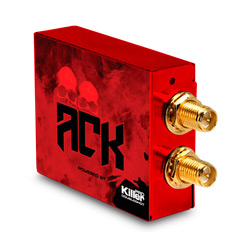
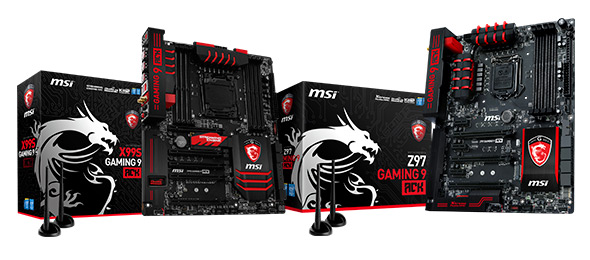





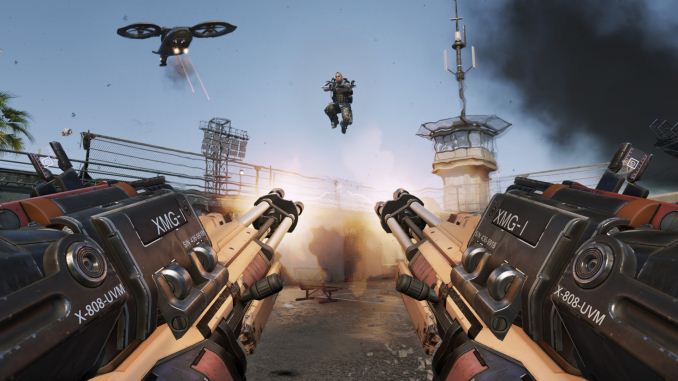
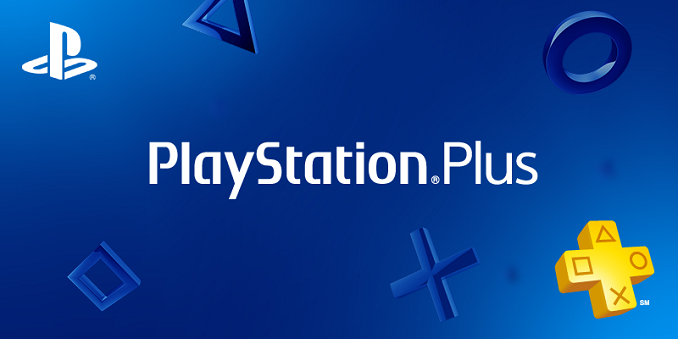
























Bookmarks